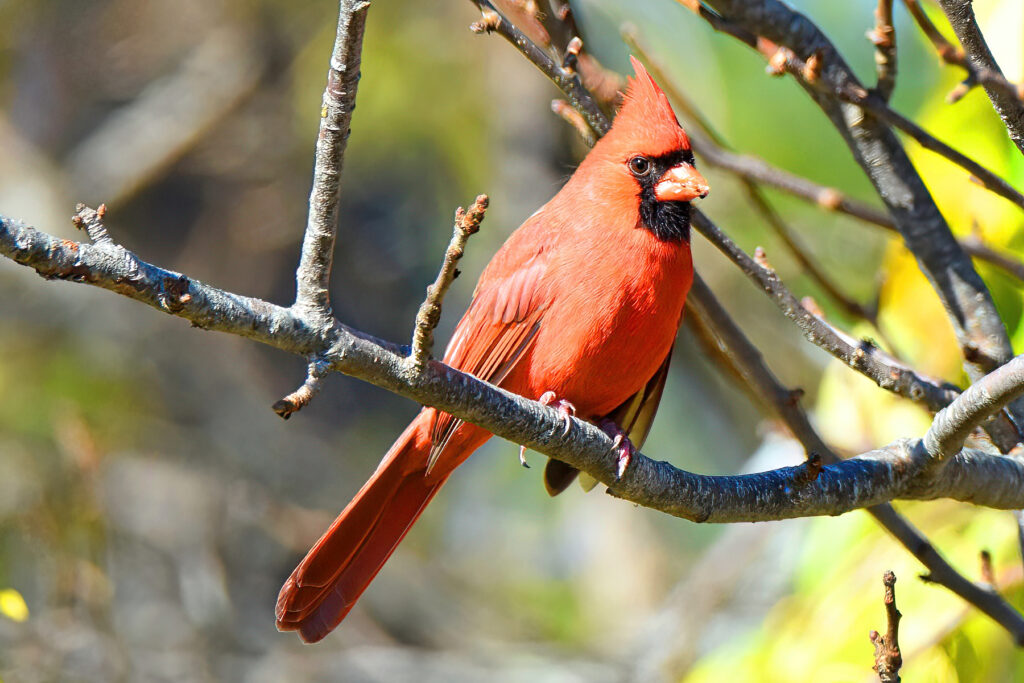
The Northern Cardinal (Cardinalis cardinalis) is a beautiful and beloved bird species native to North America. These birds are medium-sized, measuring about 8.3 to 9.3 inches in length and weighing between 1.4 and 1.7 ounces. Males are slightly larger than females, with a wingspan of about 10 to 12 inches compared to the female’s 9.8 to 11.8 inches.

One of the most distinguishing field marks of the Northern Cardinal is its bright red plumage, which covers most of the bird’s body, except for its face, throat, and upper breast, which are black. The male has a distinctive crest on its head that can be raised or lowered depending on its mood. Females have a more subdued coloration, with a grayish-brown body and a reddish tinge on their wings, tail, and crest.
Northern Cardinals are non-migratory birds, which means they stay in their breeding territories throughout the year. However, they may move around within their range depending on the availability of food and nesting sites. They are found throughout the eastern and southern parts of the United States, from Maine to Texas and as far west as Arizona.
During the breeding season, Northern Cardinals are monogamous and territorial. The male will defend its territory from other males, often engaging in singing contests to establish dominance. Females build the nests, which are typically located in dense shrubs or thickets, and lay 3-4 eggs per clutch. Both parents take turns incubating the eggs and feeding the chicks.

Despite their non-migratory habits, Northern Cardinals are still vulnerable to habitat loss and fragmentation, as well as predation from domestic cats and other predators. However, these birds are adaptable and can be found in suburban and urban areas, as well as in forests and grasslands. Their beautiful plumage and cheerful songs make them a favorite among birdwatchers and backyard bird enthusiasts alike.

